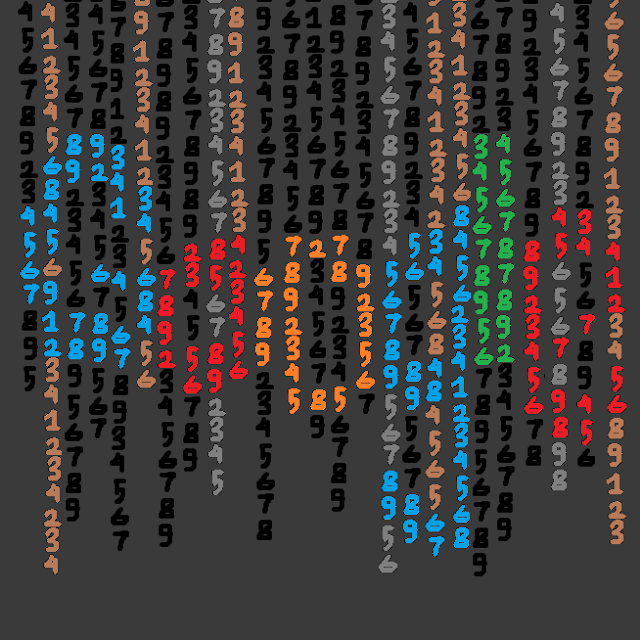The Power of Pro Tools - The Ultimate Digital Audio Workstation for Creators - Blog No. 35
In the ever-evolving world of music production, film scoring, and sound design, Pro Tools has solidified its place as the industry standard Digital Audio Workstation (DAW).
Whether you're a bedroom producer, a professional engineer, or a film composer, Pro Tools offers unmatched flexibility, precision, and power. But what makes it the go-to DAW for professionals worldwide?
Let’s dive deep into the world of Avid Pro Tools and uncover why it remains at the forefront of audio production.
Related
The Art of Music Transcribing - Unlocking the Secrets of Sound - Blog No. 31
The Evolution of Digital Audio Workstations (DAW) - Transforming Sound Creation - Blog No. 32
The Evolution of Pro Tools: A Brief History
Before Pro Tools dominated recording studios, the industry relied heavily on analog tape-based systems. However, the rise of digital recording in the late '80s and early '90s changed the landscape. Digidesign, the company behind Pro Tools, launched its first digital audio workstation in 1989.
Over the years, it evolved from a four-track recorder into a fully-fledged powerhouse capable of handling high-definition, multi-track sessions with ease.
In 1995, Avid Technology acquired Digidesign, further pushing Pro Tools into the professional realm. Fast forward to today, and Pro Tools is the DAW of choice for Grammy-winning producers, Hollywood film sound designers, and top-tier mixing engineers.
Why Pro Tools? The Industry Standard for Audio Professionals
Several DAWs compete in the digital audio space, but Pro Tools stands out due to its reliability, scalability, and deep integration with professional studio workflows. Here’s what makes it an unbeatable choice:
1. Superior Audio Editing Capabilities
When it comes to precision, Pro Tools is unmatched. Its non-destructive, sample-accurate editing allows engineers to fine-tune audio with surgical precision. Whether you need to fix timing issues, pitch-correct vocals, or eliminate background noise, Pro Tools provides a suite of tools that make editing a breeze.
2. High-Quality Recording and Mixing
Pro Tools supports up to 32-bit floating-point audio and 192 kHz sample rates, making it a perfect choice for professional-grade recordings. It offers features like low-latency monitoring, high-quality preamps (with Avid hardware), and seamless integration with external gear.
Mixing in Pro Tools is also a dream. The built-in MIDI editor, automation tools, and industry-standard plugin support allow engineers to craft intricate and polished mixes.
3. Powerful Plugin and Virtual Instrument Support
Pro Tools supports AAX (Avid Audio eXtension) plugins, which include some of the best third-party effects and virtual instruments. Some of the industry’s most respected plugins, like Waves, FabFilter, SoundToys, and iZotope, are fully optimized for Pro Tools.
4. Seamless Collaboration with Cloud Integration
In today’s world, remote collaboration is key. Avid Cloud Collaboration allows multiple users to work on a session simultaneously, no matter where they are in the world. This feature makes Pro Tools a favorite for film post-production teams, music producers, and podcast editors.
5. Industry-Standard for Post-Production Audio
Pro Tools isn’t just for music production. It’s a go-to DAW for film and TV post-production. With features like ADR (Automated Dialogue Replacement), 5.1/7.1 surround sound mixing, and Dolby Atmos integration, Pro Tools is an essential tool in Hollywood’s biggest productions.
Choosing the Right Pro Tools Version: Which One is Right for You?
Avid offers multiple versions of Pro Tools to cater to different users. Here’s a breakdown to help you choose the right one:
Pro Tools Intro (Free) – Ideal for beginners who want to experiment with digital audio without committing to a full license.
Pro Tools Artist ($9.99/month) – A great choice for home producers and songwriters looking for a feature-rich yet affordable DAW.
Pro Tools Studio ($31.99/month) – Perfect for professionals who need advanced mixing, editing, and recording tools.
Pro Tools Ultimate ($99.99/month) – The full-fledged version used in top studios for film scoring, Dolby Atmos mixing, and high-end production.
Pro Tools vs. The Competition: How Does It Compare?
While Pro Tools dominates the professional sphere, other DAWs like Logic Pro, Ableton Live, and FL Studio cater to different needs. Here’s how they compare:
Logic Pro X – More suited for Mac users and musicians who want a comprehensive music production suite with built-in instruments.
Ableton Live – The best DAW for live performances and electronic music producers due to its clip-based workflow.
FL Studio – Popular with beginners and hip-hop producers for its intuitive step sequencer and loop-based workflow.
Cubase – A powerful alternative, especially for composers who work with MIDI-heavy projects.
Despite these strong competitors, Pro Tools remains king for high-end studio recording, mixing, and post-production.
Pro Tools Tips & Tricks: Get the Most Out of Your Workflow
To master Pro Tools, consider these expert tips:
1. Use Keyboard Shortcuts for Faster Editing
Pro Tools has a vast array of keyboard shortcuts that can drastically improve your workflow. For example:
Cmd + E (Mac) / Ctrl + E (Windows) – Split a clip at the cursor.
Cmd + Z (Mac) / Ctrl + Z (Windows) – Undo an action.
Shift + R – Record enable a track instantly.
2. Organize Your Sessions Efficiently
Name your tracks clearly and use color coding to differentiate instruments.
Use track groups to apply edits to multiple channels at once.
Create memory locations to mark important points in your session.
3. Leverage Pro Tools’ Elastic Audio for Perfect Timing
Elastic Audio is a game-changer for tightening drum performances or fixing timing issues in vocals. Simply enable Elastic Audio on a track and use the warp markers to adjust timing seamlessly.
4. Automate Everything for Dynamic Mixes
Automation is a key feature in creating dynamic and evolving mixes. Whether you want to automate volume, panning, reverb sends, or plugin parameters, Pro Tools makes it effortless.
5. Explore Third-Party Plugins
While Pro Tools comes with excellent stock plugins, third-party plugins can take your mixes to the next level. Try:
FabFilter Pro-Q 3 for precision EQ.
Waves SSL G-Master Buss Compressor for glueing your mix together.
SoundToys EchoBoy for rich, analog-style delays.
Final Thoughts: Is Pro Tools Worth It?
If you're serious about audio production, Pro Tools is worth every penny. While it comes with a learning curve, the payoff is a professional-grade DAW used in the biggest studios worldwide. Whether you’re mixing a record, producing a podcast, or working on a blockbuster film, Pro Tools delivers industry-standard results every time.
Ready to Take Your Productions to the Next Level?
If you haven’t tried Pro Tools, now is the perfect time. Download the Pro Tools Intro version and explore its capabilities. With the right tools, practice, and creativity, you’ll be crafting world-class productions in no time.
SEO Keywords: Pro Tools DAW, Avid Pro Tools, best digital audio workstation, Pro Tools vs Logic, Pro Tools for beginners, Pro Tools plugins, Pro Tools mixing tips, music production software, film scoring DAW, Pro Tools Ultimate.
Do you use Pro Tools? Let us know your favorite features and tips in the comments below!



Comments
Post a Comment